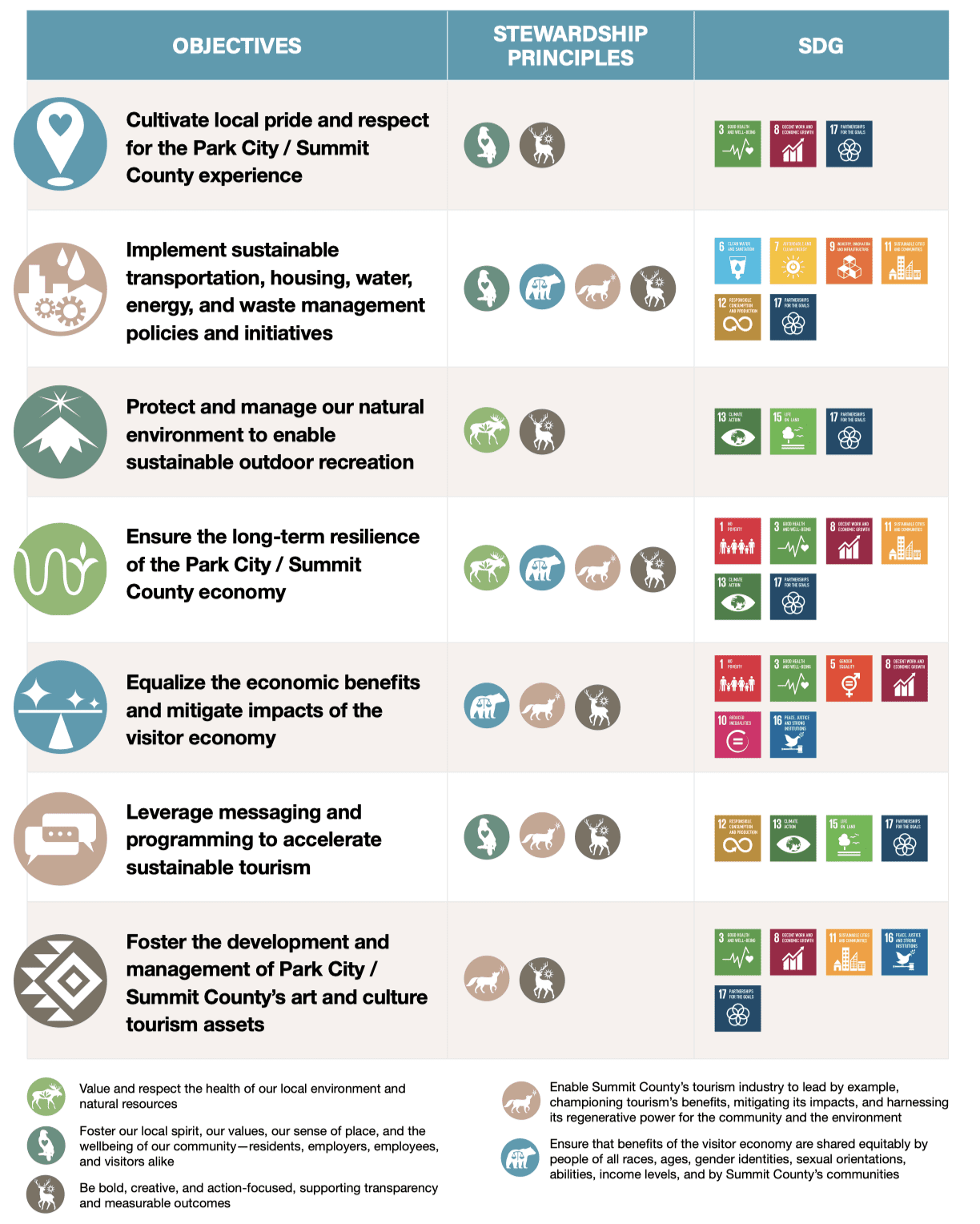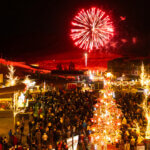Sponsored
New Sustainable Tourism Plan strives to balance economic vitality with resident quality of life

The Sustainable Tourism Plan aims to balance community foundation with economic success and environmental protection and sustainability. Photo: TownLift // Meredith Kluever.
SUMMIT COUNTY, Utah — For the past 18 months, the Park City Chamber of Commerce | Convention & Visitors Bureau, along with Park City Municipal, have assessed, surveyed, and researched their way to a Sustainable Tourism Plan (STP) that aims to balance economic success, environmental protection and quality of life, stating in the plan:
It is clear that our work is more than visitation: it is about people and how we share this amazing place with others. We need to approach our work so that it proactively builds positive social and environmental outcomes and fosters sustainable economic growth.
“We recognize that with tourism success also comes great civic responsibility,” said Park City Chamber President and CEO Jennifer Wesselhoff.
“We recognize the power of tourism and want to celebrate the positive impacts, but we’re also smart enough to know that we can also use that power of influence to mitigate the negative impacts or the burdens of tourism. That’s really what this plan is all about.”
The foundation of the Plan began with the Global Sustainable Tourism Council’s (GSTC) Destination Assessment examining how Summit County held up to GSTC’s forty-four standards. Surveys and research by the Coraggio Group were framed by the GSTC findings and identified seven themes in answers from over 2,500 community members:
- Park City Chamber & Visitors Bureau staff and board are engaged and prepared to take on the challenges ahead
- Degradation of Summit County’s key natural assets is a real and looming threat
- Park City’s residents are approaching a breaking point from over-tourism
- The community of Park City is about to lose itself to the destination of Park City
- The destination needs more stewardship, not more promotion
- Current and future tourism levels, on top of community population growth, are testing the capacity of Park City’s infrastructure
- There is a shared vision and desire to achieve a more sustainable tomorrow
Lastly, the 22-member Stewardship Council worked to ensure the STP lined up with residents, business owners, organizations, and stakeholder values and concerns.
These themes, councils, assessments, and surveys were the foundation and framework for the official Sustainable Tourism Plan released to the public on September 27.
The STP is comprised of stewardship principles and objectives that were framed around Sustainable Development Goals (SDG) defined by the United Nations:
- Cultivate local pride and respect for the Park City/Summit County experience
- Implement sustainable transportation, housing, water, energy, and waste management policies and initiatives
- Protect and manage our natural environment to enable sustainable outdoor recreation
- Ensure the long-term resilience of the Park City/Summit County economy
- Equalize the economic benefits and mitigate impacts of the visitor economy
- Leverage messaging and programming to accelerate sustainable tourism
- Foster the development and management of Park City/Summit County’s art and culture tourism assets
Morgan Mingle stepped into the Chamber’s brand-new role of Director of Sustainable Tourism in February.
“My role allows the Chamber & Visitors Bureau to catalyze positive change through the lens of tourism, maintaining open channels of communication with stakeholders, monitoring what’s happening in the community and amplifying that work under a unified approach, and developing programs and resources to advance the initiatives and goals of Plan,” said Mingle. “A big goal of the Sustainable Tourism Plan is to have transparency throughout the implementation process and have reliable feedback loops.”
The approach to STP is in three phases (listed out completely with actionables on page 46 of the Plan); phase one has a timeline of 1-3 years, phase two is 4-6 years, and phase three is 7-10 years. Throughout implementation, surveys will be dispensed to community members and visitors to gauge sentiments. The plan is not rigid, it’s a living document, and Mingle foresees adaptations in the future.
“We are paying a lot of attention to visitor education, and especially how we’re going to be communicating with visitors this coming winter season,” Mingle said. “We’ve been developing educational videos, as well as looking at plans to revamp the Visitor Center at Kimball junction to be a place that visitors really want to stop into.”
Wesselhoff and Mingle said that “cultivating a sense of pride for locals” and visitor education are the top of phase one, or short-term priorities, along with growing the green business certifications and investing in arts and culture.
Mingle stated her excitement in introducing a new comprehensive trail-update platform in partnership with Mountain Trails and Basin Recreation, which compiles year-round trail statuses for locals and visitors who take advantage of Park City’s 400 miles of continuous trails.
“To me, when people ask me what sustainable tourism is,” said Wesselhoff. “it’s all about balancing a thriving economy with protecting our environment and our quality of life for our residents.”





















